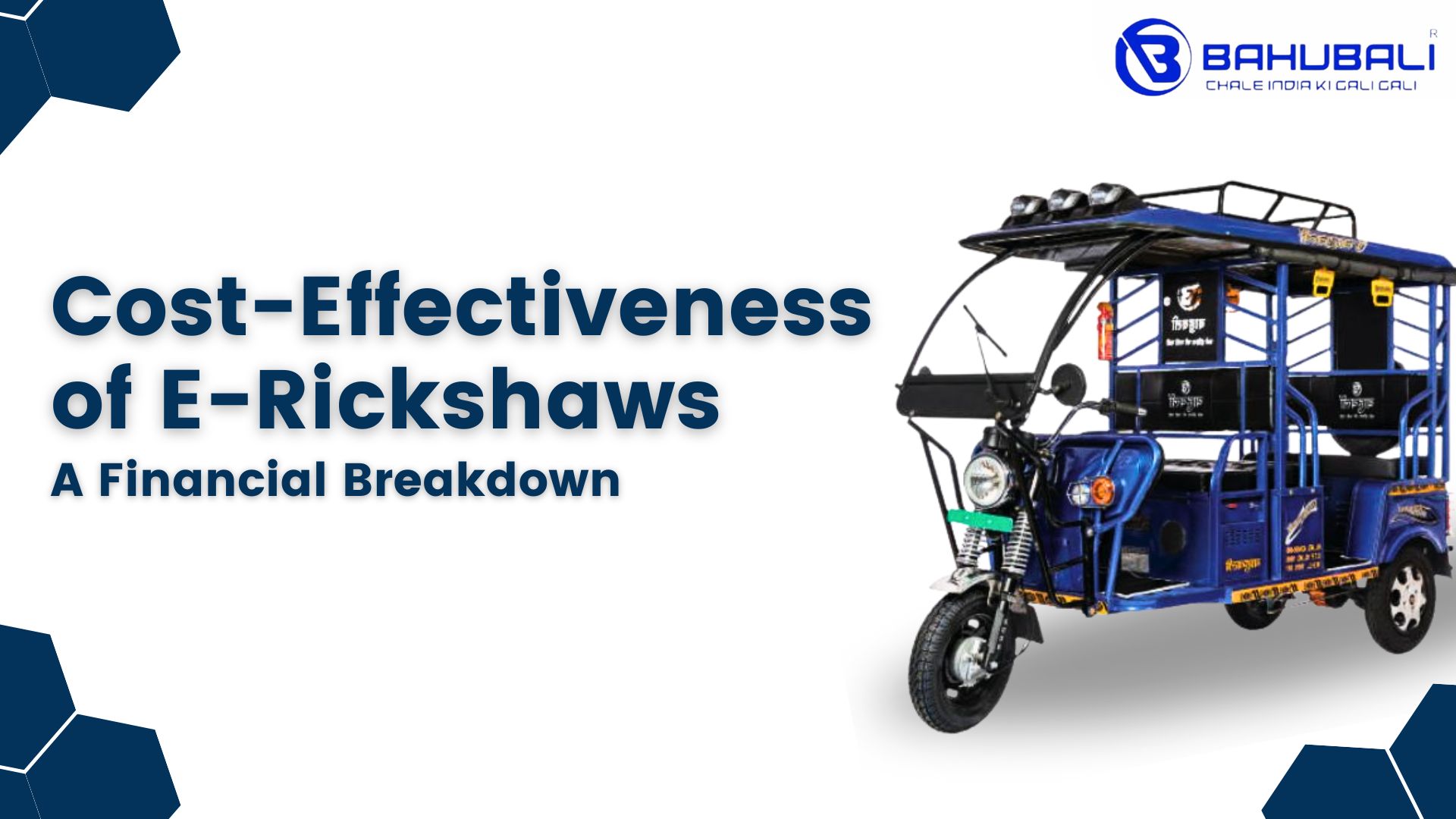
The world is now turning towards more sustainable means of transport, and electric rickshaws (or e-rickshaws) are becoming a good alternative to the usual auto-rickshaws. This is especially true in places like India. Not only do these e-rickshaws help save our environment, but also they make good financial sense too. In this blog write-up, we will discuss how cost-effective it can be for drivers and operators to have an e-rickshaw by providing detailed information about their costs.
Usually, the initial price of an e-rickshaw is more than a standard auto-rickshaw. it is not more then E- rickshaw , But, help from the government like subsidies and incentives can cut down this beginning investment significantly. To encourage people to use e-rickshaws, many governments provide large subsidies. For example, the FAME program in India (which stands for Faster Adoption and Manufacturing of Hybrid and Electric Vehicles) offers benefits that can pay a major part of the vehicle price.
Loans with low interest from institutions of finance supported by the government make e-rickshaws more reachable. These loans frequently have lesser rates of interest than those for auto-rickshaws in a traditional manner, auto rickshaws are available on cheaper loans , e rickshaw loan are very high , this is the challenge industry is facing, extended periods to repay loans and fewer demands on down payment. This positive environment for financing helps drivers switch to e-rickshaws regardless of the initial cost being higher.
A big plus of e-rickshaws is they use less energy. To charge an e-rickshaw every day and month, the electricity bill is much smaller than fuel costs for regular auto-rickshaws that run on petrol or CNG. This cost difference in energy results in a lot of savings each year for those who operate e-rickshaw.
E-rickshaws are very good in another field, it is the cost of maintaining them. They have fewer moving parts than traditional auto-rickshaws which means they don’t need to be maintained as often and overall maintenance costs less. It’s true that e-rickshaws’ batteries need to be replaced from time to time, but we can see this expense is balanced by how much money you save on regular repair works and fuel bills.
E-rickshaws frequently can work in places where usual auto-rickshaws cannot, possibly causing increased income. The everyday and monthly money-making potential for e-rickshaw drivers often surpasses that of standard auto-rickshaw operators.
Also, e-rickshaws make less noise and are more comfortable to drive. This means they can be used for longer hours. More driving time may result in extra money for the drivers. The benefit of going into limited access areas with extended working time brings a big profit chance for those using electric rickshaws.
Because of lesser running expenses and the chance for greater profits, e-rickshaw owners often attain their break-even point earlier than common auto-rickshaw owners. This faster investment recovery makes e-rickshaws a tempting choice for individuals starting off in the rickshaw trade.
In several years, the complete expense to own an e-rickshaw is much less compared to a standard auto-rickshaw. Considering first price, daily costs, and essential replacements such as batteries, in the long term it turns out that e-rickshaws are cheaper.
Different cities give extra benefits for eco-friendly vehicles. This can be less money or no cost at all for parking, use of particular lanes or areas and tax advantages. These incentives could provide more savings for those who run e-rickshaws and also improve their efficiency in costs.
E-rickshaws give big money advantages, but there are problems to think about. The presence of charging facilities can influence how well they work, even though more and more governments put money into this issue. E-rickshaws also cannot go very far without recharging, so good journey planning is needed for the best profits. Weather sensitivity can affect battery performance, potentially impacting daily earnings during severe weather conditions.
Even with subsidies, the initial expense may remain a hurdle for certain drivers. Nonetheless, there is no appealing loans for e rickshaw
are reducing this concern and generally, long-term savings appear more than the first investment.
The money analysis shows clearly that e-rickshaws are more cost-friendly compared to the normal auto-rickshaws. While you may need a bit more initial investment, there are much less daily running costs and chances of earning higher income. Plus, the government is offering different support which makes e-rickshaws a better option for people who drive and run them from an economic point of view.
The move to e-rickshaws is not only good for the environment; it also makes financial sense and offers better earnings prospects for drivers, as well as a cleaner urban future. With global governments promoting this change through different strategies, we can expect an increased momentum in the adoption of e-rickshaw transportation – leading us towards sustainable city transport that’s economically beneficial too.